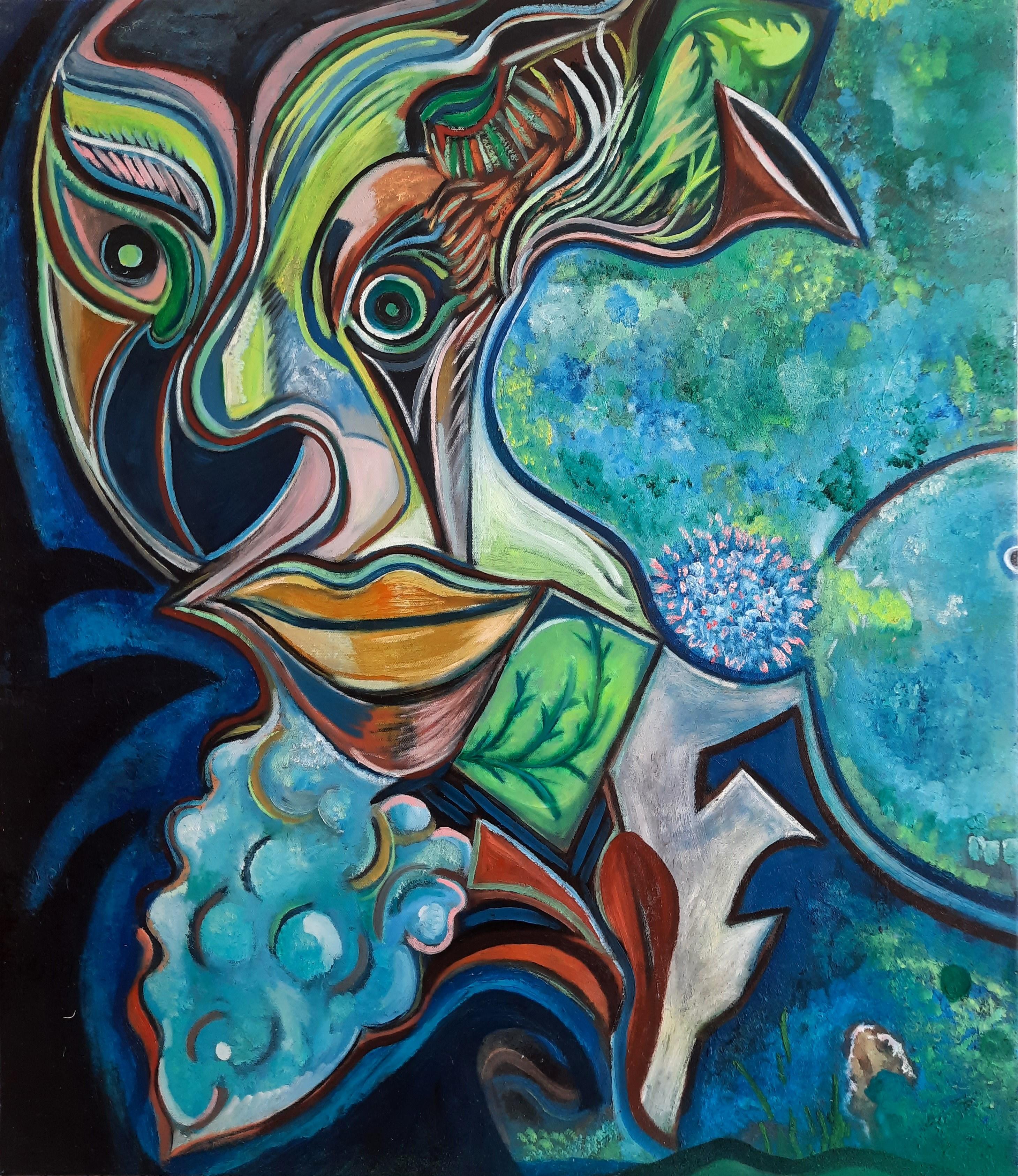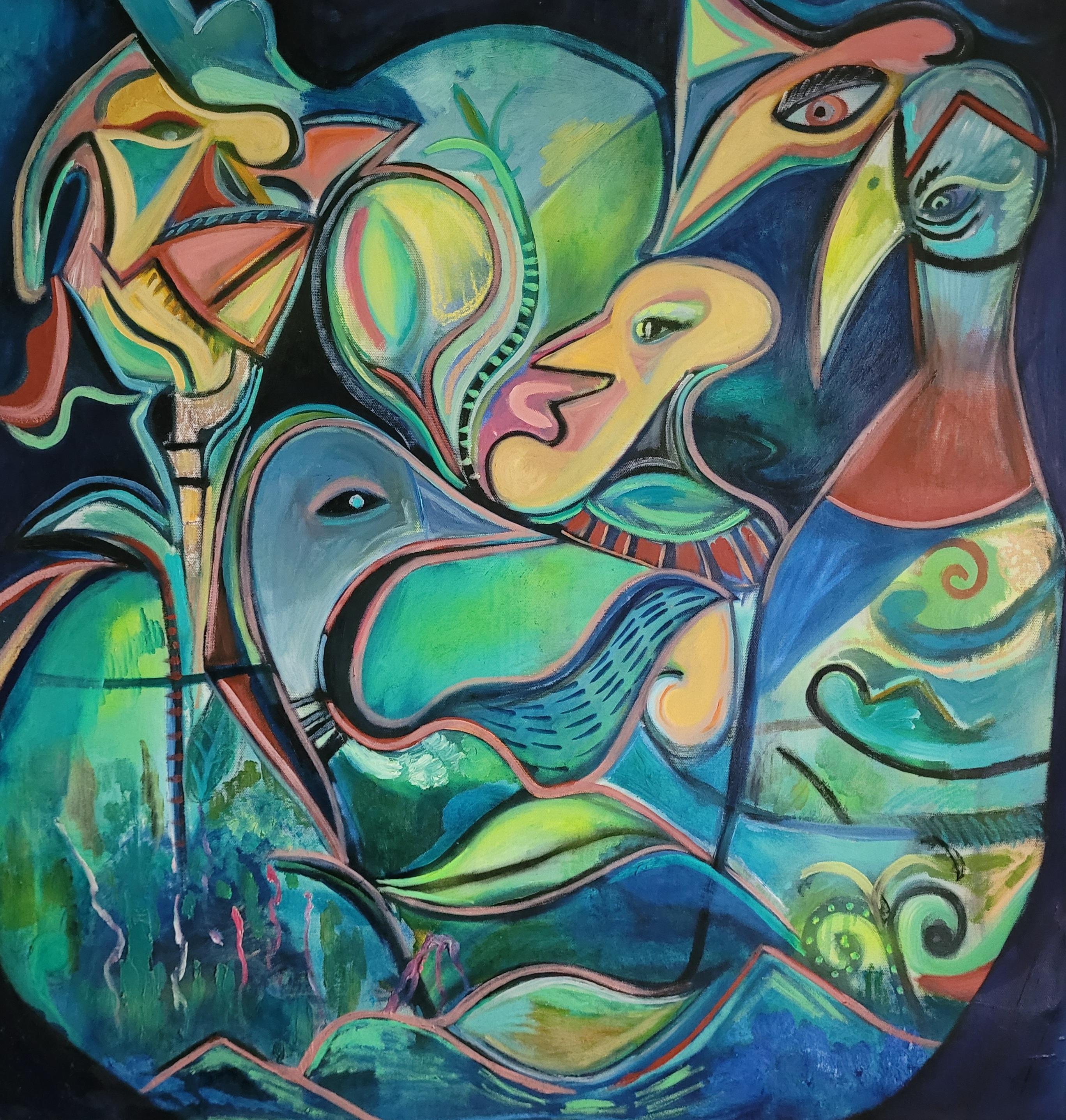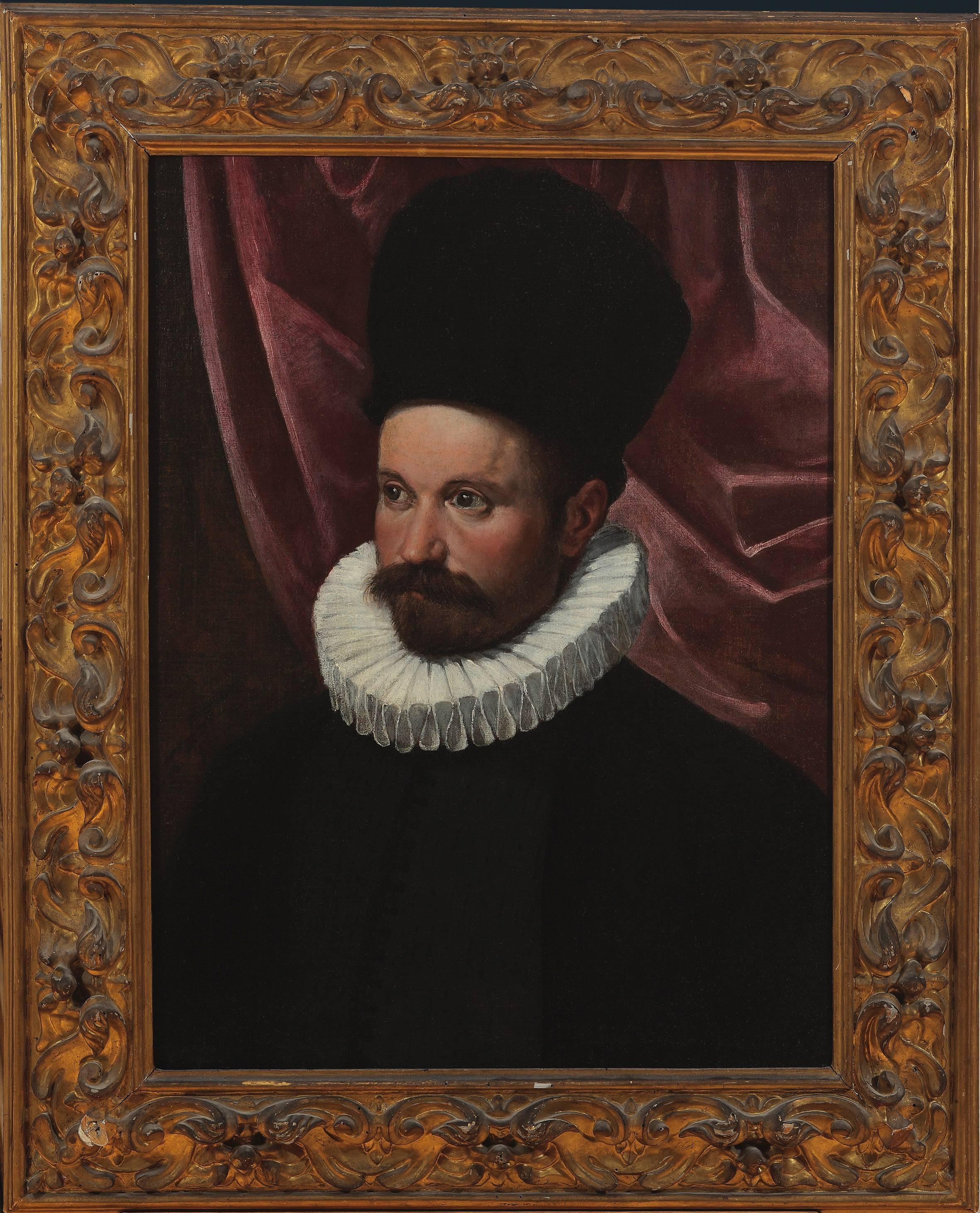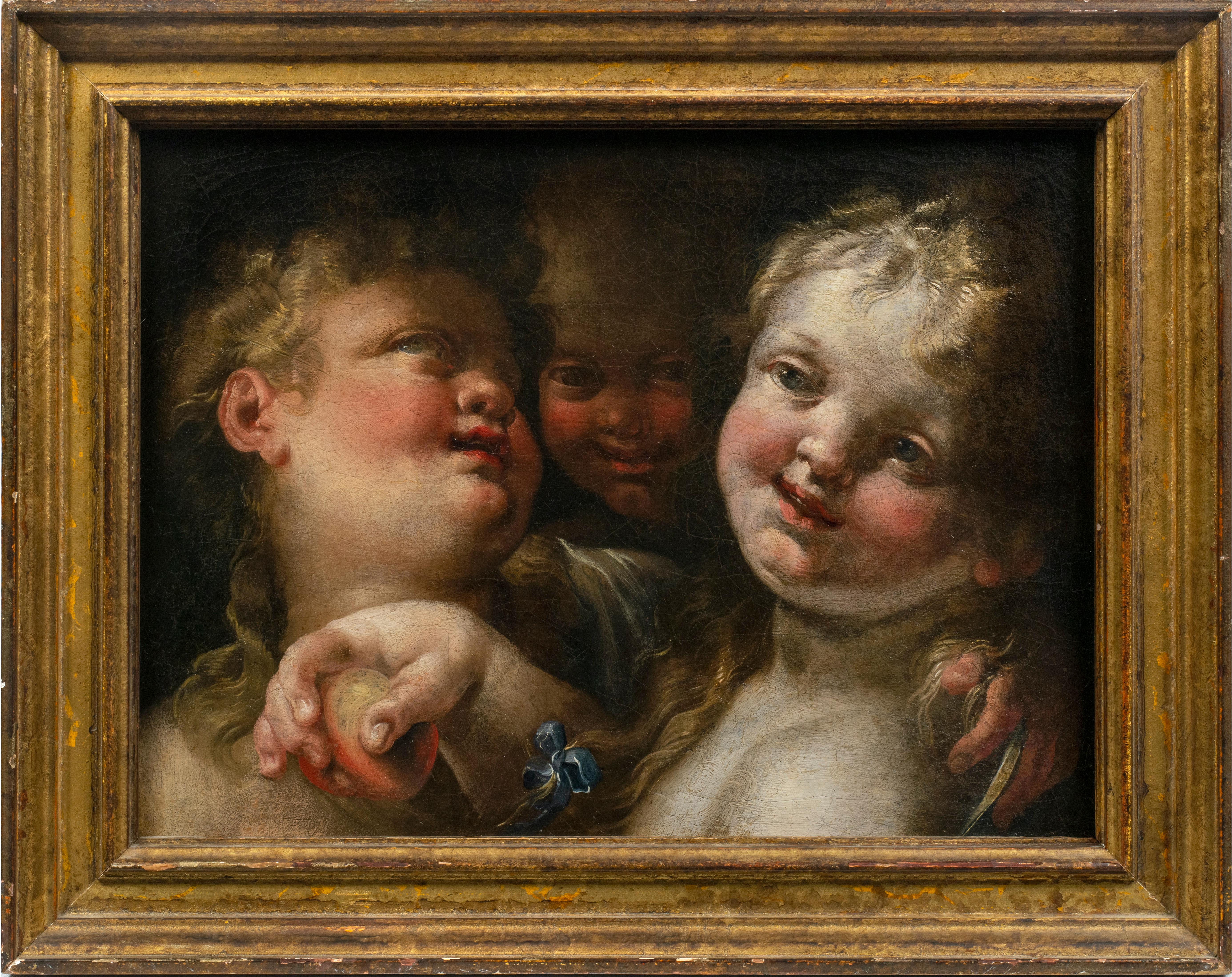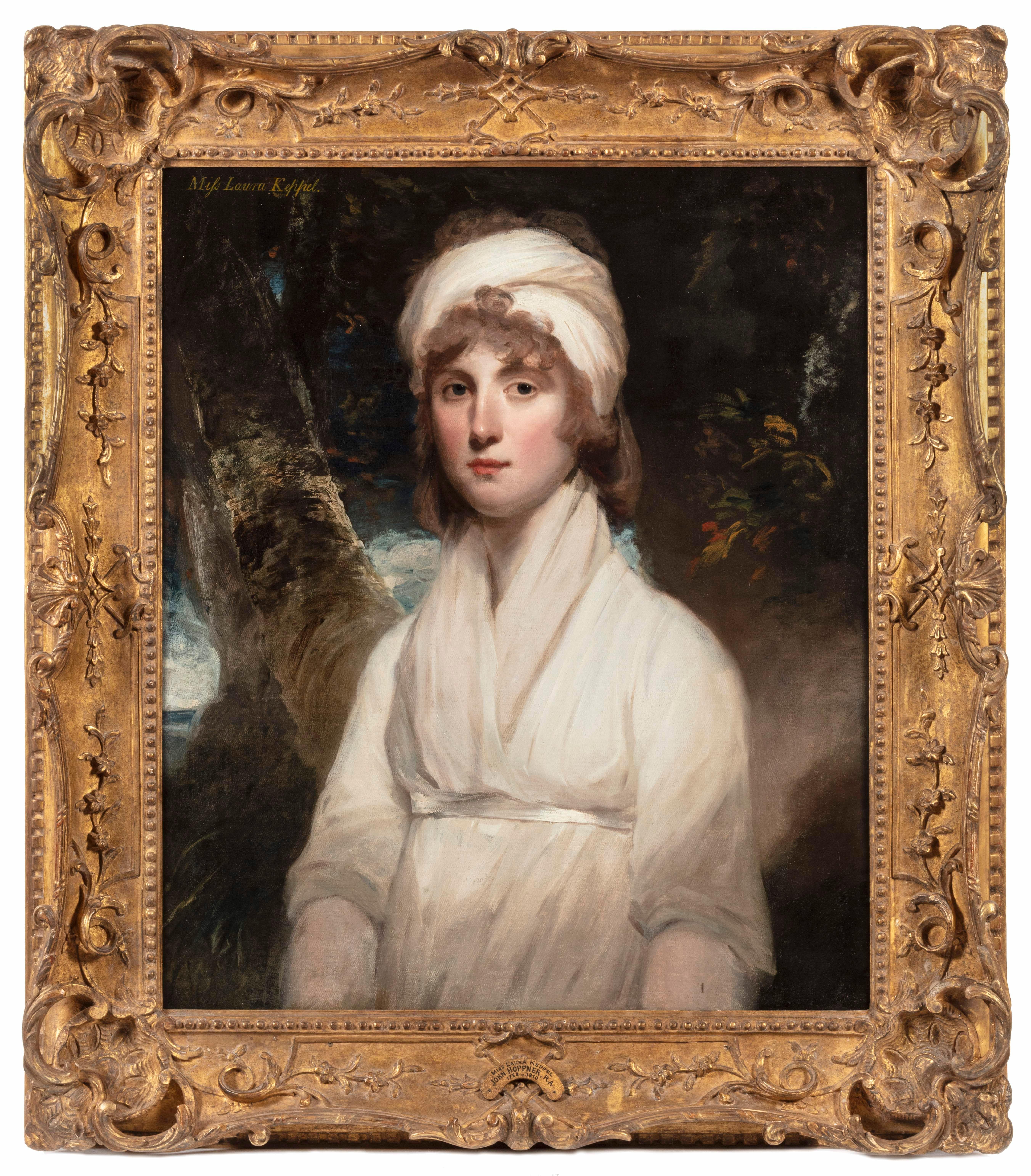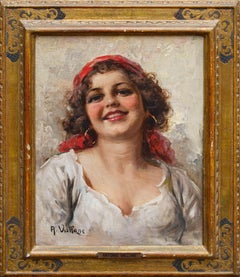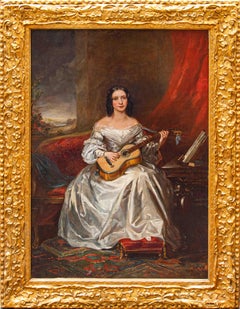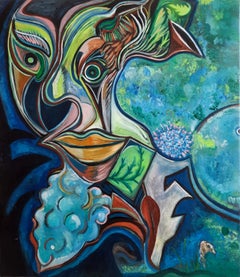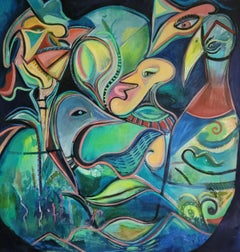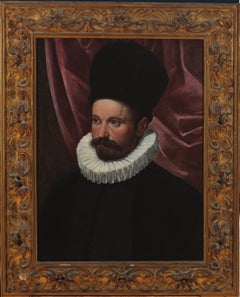Items Similar to By Lorenzo Delleani, Ezzelino da Romano contemplates the massacre of Vicenza
Want more images or videos?
Request additional images or videos from the seller
1 of 22
Lorenzo DelleaniBy Lorenzo Delleani, Ezzelino da Romano contemplates the massacre of Vicenza1863
1863
About the Item
Lorenzo Delleani (Pollone, 1840 - Turin, 1908)
Ezzelino da Romano contemplates the massacre of Vicenza
Oil on canvas, 146x116 cm
Framed, 170 x 140 cm
Signed and dated 1863 lower right
Bibliography: "Delleani. Life, work and his time" edited by Angelo Dragone, 1973, published with photos in Vol II at No. 29.
Born in Pollone, near Biella, on January 17, 1840, Lorenzo Delleani trained at the Accademia Albertina in Turin as a student of Cesare Gamba and Carlo Arienti. He initially joined the Romantic painters and painted canvases of historical subjects, often alluding to key events of the Italian Risorgimento, bringing back multiple official awards. Especially during the first season of his artistic work, the Romantic period, the Piedmontese participated in a rich array of national and international exhibitions: between the 1860s and the 1890s, he was assiduously present at the Turin Promotrice delle Belle Arti-one of the crucial events in the cultural landscape of the newly founded Kingdom of Italy-presenting mainly works of historical subjects with a Romantic flavor, among which are the famous Tasso, Columbus, Cromwell, Conradin of Swabia, On the Wharf in Venice and Lungarno in Florence while, in 1874, he exhibited at the Salon de Paris two paintings that were a great success with the public and critics on French soil, the Veniero after Lepanto and the Vinti. From the end of the seventh decade of the nineteenth century, his style gradually varied, both in expressive means and thematic repertoire, in the direction of a renewed focus on the study from life of the landscape, producing canvases with dense tints and dazzling colors. With the beginning of the 1980s, the artist devoted himself exclusively to en plein air painting, conducted in quick, dense brushstrokes of color that capture the light, adopting Piedmontese views, depicted in changing light and seasons, as his favorite subjects. Another relevant theme regarding Delleani's production, especially of his maturity, is that of religious processions and popular festivities: attracted by the folklore and spirituality of his homeland, Biella, he gives life to images with a strong evocative gradient, which will be deeply appreciated by intellectuals and art historians of the first half of the twentieth century, with particular reference to Emilio Cecchi and Anna Maria Brizio, who believes that "the eagerness and shaping expressiveness" of the Piedmontese artist's landscape and genre painting is unparalleled in the Italian pictorial landscape of the nineteenth century. In 1883, Delleani traveled to the Netherlands, intending to study the works of the Golden Age painters, to whom he was attracted by their vivid and sumptuous colorism, and brought back new creative stimuli: bearing witness to the artist's Dutch sojourn is Amsterdam, an evocative view of the Dutch capital currently preserved at the GAM in Turin (inv. P/1958). A great friend and frequenter of Turin's upper middle-class Bricherasio family-the painter and patron Sofia Bricherasio was one of his favorite pupils (she may be the woman depicted in La pittrice della GAM di Torino of 1881)-Delleani also witnessed a historical event: Emanuele Bricherasio, Sofia's brother, distinguished himself for his enterprising efforts in the emerging automobile industry, and on July 1, 1899, he summoned a group of eminent aristocrats and notables to his Turin residence, appearing among the founders of an early company that later took the name F.I.A.T.. Delleani was specifically asked to depict the memorable event, and he produced a famous painting where Bricherasio is portrayed in the act of initialing the document that elevated him to the office of vice president. Settling permanently in Turin, at the residence of a cousin in Via Alfieri, Delleani painted until his death: in 1905, he had completed his last large canvas, The Feast of St. Barnabas, made especially to be donated to his native village, Pollone: his last painting was instead executed on September 28, 1908, in Oropa: while he was executing The Turning Point, his last view of the Sanctuary of the Black Madonna, the now elderly artist was portrayed by his favorite pupil, Giuseppe Bozzalla: Bozzalla's painting constitutes a precious testimony of Delleani's passion and dedication with respect to his painting activity, which he conducted until the end of his days. Commemorating the figure of Delleani is the fine monument erected in his honor at the square of the Collegiate Church in Pollone, within which the painter is depicted with the striking profile of the Sanctuary of Oropa behind him, by the hand of Leonardo Bistolfi (1859-1933), a plaster sketch of which exists at the Museum of the Biellese Territory in Biella. Since the first decade of the 20th century, Delleani's work has been particularly appreciated by critics and "insiders": the first post-mortem exhibition dedicated to the artist was held as part of the Promotrice delle Belle Arti in Turin in 1909; however, it dates to 1940-the year of the centenary of his birth- the largest exhibition in honor of the Biella-born painter: the show, curated by acclaimed art historian Vittorio Viale and Delleani's favorite pupil Giuseppe Bozzalla, was held at Turin's Salone della Stampa between Feb. 10 and April 7. In just under thirty days, the event welcomed more than 230,000 visitors, in an "absolute public success" (La Stampa, Sunday, April 7, 1940). At the '40 exhibition catalog, edited by Marziano Bernardi, Lorenzo Delleani's work is presented as the "realistic counterpart" to Antonio Fontanesi's constant idealization and Vittorio Avondo's dark, placid crepuscularism. Among the 120 works presented at the major exhibition dedicated to the Piedmontese painter is also Ezzelino da Romano contemplates the massacre of Vicenza: the work, executed in 1863 and first shown at the Turin Promotrice of the same year (displayed under no. 218, still visible near the lower right margin of the canvas), presents an absolutely unusual iconographic theme, that of the destruction of the city of Vicenza - the view behind the characters features some of the most distinctive buildings of medieval Vicenza, including the Bissara tower, symbol of the city, erected at the behest of the noble Bissari family between 1211 and 1229, the Verlato tower and the Loschi tower - perpetrated at the hands of the troops of the Swabian emperor Frederick II. According to what the pro-imperial chronicler Gerardo Maurisio reports, it was Ezzelino da Romano who pushed the emperor's attempt to conquer Vicenza: the capture of the city, subjected to a violent and bloody siege that culminated on All Saints' Eve 1236, led to the rise of Romano, who became governor of the Venetian center on behalf of Frederick II, ousting Marquis Azzo II d'Este. It is for this reason that the Roman appears smug as he observes, cloaked in red and clad in shining armor below the Captaincy Lodge, the grim spectacle that would mark the beginning of his climb up the sociopolitical hierarchies. The bright and flamboyant tones of the canvas, as well as the composition crowded with multiple figures and managed on multiple levels, align and compete with the pictorial pieces of the most prominent figures of Italian Romanticism, Francesco Hayez (1791-1882), Giuseppe Molteni (1800-1867) and Angelo Inganni (1807-1880). A work like this is able to confirm the words of Bernardi, among the leading experts on the painter, who describes Delleani as "the most instinctive and impetuous painter of modern Piedmont."
- Creator:Lorenzo Delleani (1840 - 1908, Italian)
- Creation Year:1863
- Dimensions:Height: 57.49 in (146 cm)Width: 45.67 in (116 cm)
- More Editions & Sizes:cm 146x116Price: $30,923
- Medium:
- Period:
- Condition:
- Gallery Location:Milan, IT
- Reference Number:1stDibs: LU2639215779992
About the Seller
No Reviews Yet
Vetted Professional Seller
Every seller passes strict standards for authenticity and reliability
1stDibs seller since 2023
- ShippingRetrieving quote...Shipping from: Milan, Italy
- Return Policy
Authenticity Guarantee
In the unlikely event there’s an issue with an item’s authenticity, contact us within 1 year for a full refund. DetailsMoney-Back Guarantee
If your item is not as described, is damaged in transit, or does not arrive, contact us within 7 days for a full refund. Details24-Hour Cancellation
You have a 24-hour grace period in which to reconsider your purchase, with no questions asked.Vetted Professional Sellers
Our world-class sellers must adhere to strict standards for service and quality, maintaining the integrity of our listings.Price-Match Guarantee
If you find that a seller listed the same item for a lower price elsewhere, we’ll match it.Trusted Global Delivery
Our best-in-class carrier network provides specialized shipping options worldwide, including custom delivery.More From This Seller
View AllBy Antonio Vallone (active in Naples in the 20th century), Portrait of a Young Man
Located in Milan, IT
Antonio Vallone (active in Naples in the 20th century)
Portrait of young man with red scarf
Oil on canvas, 40.5 x 30.3 cm
Framed, 52 x 42 cm
Signed lower left: A. Vallone
The cu...
Category
Early 20th Century Other Art Style Portrait Paintings
Materials
Canvas, Oil
Pair of portraits follower of Philippe de Champaigne
Located in Milan, IT
Follower of Philippe de Champaigne (Brussels, May 26, 1602 - Paris, August 12, 1674)
Pair of portraits
(2) Oil on canvas , 58 x 44 cm
with frame, 67 x 54 cm
A sense of deep stil...
Category
17th Century Portrait Paintings
Materials
Cotton Canvas, Oil
By Thomas Alfred Woolnoth (UK, 1785-1857), Girl with guitar
Located in Milan, IT
Thomas Alfred Woolnoth (United Kingdom, 1785-1857)
Girl playing guitar
Oil on canvas, 96 x 62 cm
Framed, 112 x 82.5 cm
A multifaceted artist of great interest, Sir Thomas Alfred ...
Category
19th Century Other Art Style Portrait Paintings
Materials
Canvas, Oil
Antonio Vallone (active in Naples in the 20th century), Portrait of a young man with headscarf
Located in Milan, IT
Antonio Vallone (active in Naples in the 20th century)
Portrait of young man with red scarf
Oil on canvas, 40.5 x 30.3 cm
Framed, 52 x 42 cm
signed lower left: A. Vallone
The cu...
Category
Early 20th Century Other Art Style Portrait Paintings
Materials
Canvas, Oil
By Pierre Mequignon, Portrait of Carlo Gozzi
Located in Milan, IT
Peter Mequignon (1768-1826), 1794
Portrait of Carlo Gozzi
Oil on panel, 15 cm x13
Base cm 27 x 18
Dated and signed "P. Mequignon 1794"
The protagonist portrayed, identified by ...
Category
18th Century Other Art Style Portrait Paintings
Materials
Oil, Board
Herman Posthumus (East Frisia, 1512/1513 - Amsterdam, 1588), Leda
Located in Milan, IT
Herman Posthumus (East Frisia, 1512/1513 - Amsterdam, 1588)
Leda & the Swan
Oil on canvas, 87.5 x 142 cm
Framed, 107 x 161 cm
Initial 'P' in the center of a pillow decoration
Cr...
Category
16th Century Other Art Style Nude Paintings
Materials
Oil, Canvas
You May Also Like
Italian 18th Century Oval Religious Oil on Canvas Painting with Saint Dominic
By Francesco de Mura
Located in Firenze, IT
This beautiful Italian 18th Century old masters oil painting on oval canvas with giltwood frame is attributed to Solimena and features a religious scene.
In this splendid oval-shaped painting are depicted Saint Dominic...
Category
18th Century Old Masters Figurative Paintings
Materials
Canvas, Oil
What is above is like what is below Timothy Archer 21st Century painting
By Timothy Archer
Located in Paris, FR
Oil paint on canvas
Signed lower right
Category
2010s Contemporary Figurative Paintings
Materials
Canvas, Oil
Metamorphosed Narcissus Timothy Archer 21st Century Contemporary painting myth
By Timothy Archer
Located in Paris, FR
Oil paint on canvas
Signed lower right
Category
2010s Contemporary Figurative Paintings
Materials
Canvas, Oil
Portrait of a Gentleman
By Ippolito Scarsella (Scarsellino)
Located in New York, NY
Provenance: Suida-Manning Collection, New York
Private Collection
Exhibited: Venetian Paintings of the Sixteenth Century, Finch College Museum of Art, New York, October 30-December 15, 1963, no. 31.
Veronese & His Studio in North American Collections, Birmingham Museum of Art, Oct. 1-Nov. 15, 1972, and Montgomery Museum of Fine Arts, Dec. 5-Dec. 31, 1972
Literature: Robert L. Manning, A Loan Exhibition of Venetian Paintings of the Sixteenth Century, exh. cat. New York 1963, cat. no. 31ill., as by Veronese
Stephen Clayton and Edward Weeks, eds., introduction by David Rosand, Veronese & His Studio in North American Collections, Birmingham 1972, as by Veronese, p. 38 ill.
Terisio Pignatti, Veronese, Venice 1976, I, p. 199, cat. no. A225, II, fig. 908, as attributed to Veronese
Terisio Pignatti and Filippo Pedrocco, Veronese; catalogo completo dei dipinti, Florence 1991, no. 54°, as attributed to Veronese.
Terisio Pignatti and Filippo Pedrocco, Veronese, Milan 1995, II, pp. 517-518ill., cat. no. A 56, under attributed paintings, by Veronese and workshop)
John Garton, Grace and Grandeur; The Portraiture of Paolo Veronese, London-Turnhout 2008, p. 237, fig. 77, cat. no. R16, as workshop of Veronese.
Scarsellino’s art is widely regarded as critical link between the Renaissance and the Baroque styles in Emilian painting; not only was he an important transmitter of the heritage of the Renaissance, but he was also open to innovative ideas, and was one of the earliest to experiment with the trend to naturalism that would become fundamental to art of the new century. Born around 1550, he received his earliest training from his father Sigismondo, an architect and painter; it was probably while working at his father’s side as a youth that he acquired the nickname Scarsellino, or “little Scarsella”. After absorbing the principles of his art in Ferrara and Parma, he went to Venice in 1570, staying for four years and working in the shop of Veronese. In the following decade, his art —especially in terms of its piety and its development of landscape— demonstrates a strong sympathy with that of the Carracci, with whom he worked in 1592-1593 at the Palazzo dei Diamanti in Ferrara. Maria Angela Novelli and later Alessandra Frabetti both propose that Scarsellino traveled to Rome, although such a trip has not been documented; if he did travel to Rome, it probably would have occurred during the years that Scarsellino’s colleagues Agostino and Annibale Carracci were there, that is, beginning in 1595 and until 1609. The last decades of Scarsellino’s career again involve stylistic experimentation, this time in a manner that would bring his work very close to the progressive figurative naturalism of Carlo Bononi and prepare the way for Guercino.
The present portrait of a distinguished gentleman had been long thought to be by Paolo Veronese and was in fact attributed to him by such distinguished connoisseurs as Adolfo Venturi and Wilhelm Suida. The portrait’s style is, however, distinct from Veronese’s, although clearly indebted to it, and the attribution to the young Scarsellino is wholly convincing. The painting would then date from the 1570s – a date confirmed by the costume the subject wears. The puffed hat that appears in the painting had a rather short-lived vogue in the early 1570s. One sees it in Giambattista Moroni’s Portrait of Count...
Category
18th Century and Earlier Baroque Portrait Paintings
Materials
Canvas, Oil
Three Angels
By Domenico Piola the Elder
Located in New York, NY
Provenance:
Robert L. and Bertina Suida Manning, New York, until 1996
Private Collection, USA
One of the leading artists in Genoa during the second half of the seventeenth century, Domenico Piola came from a successful family of artists, renowned for their many illusionistic ceiling programs throughout Genoese churches and palaces. A prolific draughtsman and painter, Domenico oversaw an extremely productive studio. In addition to his collaborations with numerous other artists, Domenico also provided many designs for book illustrations and prints that circulated throughout Europe, earning him international exposure and high acclaim in his own day.
As Dr. Anna Orlando has indicated (written communication), the present work is an early work by Piola, datable from the late 1640s. At this time the young artist came strongly under the influence of Castiglione and Valerio Castello, while admiring the works of Giulio Cesare Procaccini. Piola’s works from this period are exuberant and fluid, and the artist’s love of portraying children is evident from the angels and putti that populate both his altarpieces and more intimate paintings.
The present work depicts three angels...
Category
17th Century Baroque Figurative Paintings
Materials
Canvas, Oil
Portrait of Laura Keppel, later Lady Southampton
By Sir John Hoppner
Located in New York, NY
Inscribed, upper left: “Miss Laura Keppel”
Provenance: Commissioned from the artist and by descent in the Keppel family estate, Lexham Hall, Norfolk, to:
Major Bertram William Arnol...
Category
18th Century Paintings
Materials
Canvas, Oil
